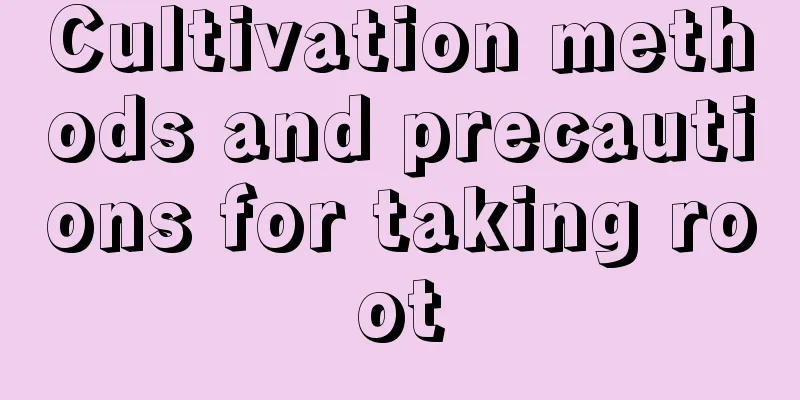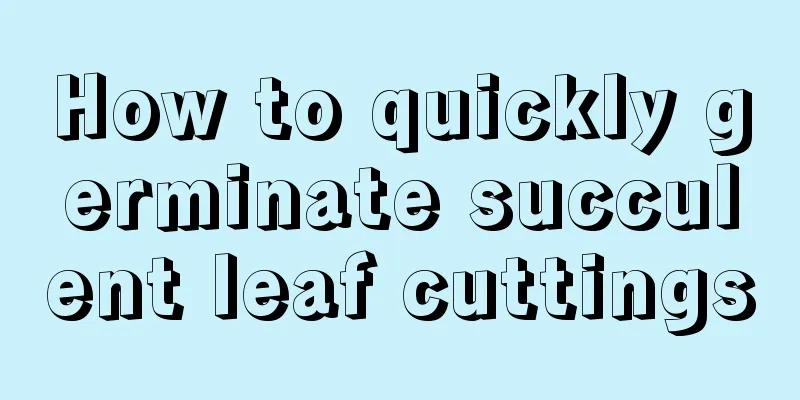Cultivation methods and precautions for taking root

Reproduction methodCommonly used propagation methods are cuttings, adventitious buds and sowing. The best time for cuttings is May to June. Lay the healthy leaves flat on the sand bed, keep them close to the sand and maintain humidity. One week after planting, small plants will grow from the teeth on the leaf margins. After growing, cut and move into pots. For branch cuttings, cut the top branches 8-10 cm long, insert them into the sand bed after they are slightly dry, they will start to take root after 1 week and can be potted after 2 weeks. Adventitious bud propagation is easier. The larger adventitious buds growing on the edge of the leaves can be peeled off and directly potted. Sowing. The seeds are small and do not need to be covered with soil after sowing. They will germinate about 12-15 days after sowing, with a high germination rate. Pruning requirementsWhen potted, you can mix 3 parts of leaf mold and 1 part of sand as the substrate. Newly potted seedlings should be topped in time to promote branching; for older plants, their stems are semi-lignified, loose and mostly bent, which reduces their ornamental value, and they should be pruned to allow new branches to sprout. Repot the plant every spring to maintain its beautiful shape. Water and fertilizer requirementsNormally, wait until the soil is completely dry before watering. Don't worry about the plant drying out. Don't fertilize too frequently, otherwise it will cause excessive growth and may cause the plant to rot. It is sufficient to fertilize 1-2 times a month during the growing season. It needs a little shade in midsummer, but there should be sufficient light in other seasons, otherwise the color of the leaf edges will disappear. Reduce watering after the autumn gets cooler. After bringing the plant indoors in winter, it can survive the winter as long as the room temperature is kept above 0℃. But keep the soil in the pot slightly moist. Pest and disease controlThe main hazards of rooting are gray mold and powdery mildew, which can be sprayed with 1000 times diluted 70% methyl thiophanate wettable powder. The insect pests include scale insects and aphids, which can be killed by spraying with 1000 times diluted 40% dimethoate emulsifiable concentrate. |
<<: How to cultivate fuchsia bonsai
>>: Cultivation methods and precautions of purple duckweed
Recommend
How to repot the lucky tree
Repotting steps The best time to repot the lucky ...
Does Osmanthus fragrans prefer shade or sun?
Does Osmanthus fragrans prefer shade or sun? Osma...
How to propagate jasmine by cuttings?
Jasmine is popular for its rich fragrance and con...
Grapevine grafting method
Grafting is a cultivation technique widely used i...
How to grow honeysuckle trees
Honeysuckle Tree Growing Conditions Honeysuckle t...
Are you still growing Chlorophytum comosum? You can make a lot of money by growing one of these unique flowers and plants!
Spring grass, instant noodle head Spring grass lo...
Chrysanthemum growth environment conditions and characteristics
Chrysanthemum growth environment conditions and r...
How to make gardenia grow taller and thicker
1. Proper pruning When the main trunk of the gard...
What are the cultivation methods and precautions of rubber trees?
Rubber tree cultivation method 1. Temperature Rub...
Can rice water be used to water flowers directly? How to use fermented rice water to water flowers
Use rice water to water flowers directly Rice wat...
Is the multi-headed daisy a small daisy? Is it suitable for growing at home?
1. Is it a daisy? Daisy is a small daisy belongin...
Rat Tail Palm Pictures
Introduction to Rat Tail Palm The young stem of t...
The succulents at home never turn color, what should I do?
sunshine Many flower lovers know that succulents ...
Can bamboo cypress be hydroponically cultivated?
Can bamboo cypress be hydroponically cultivated? ...
How to water the Sansevieria clove
1. How to water If you want to know how to water ...









